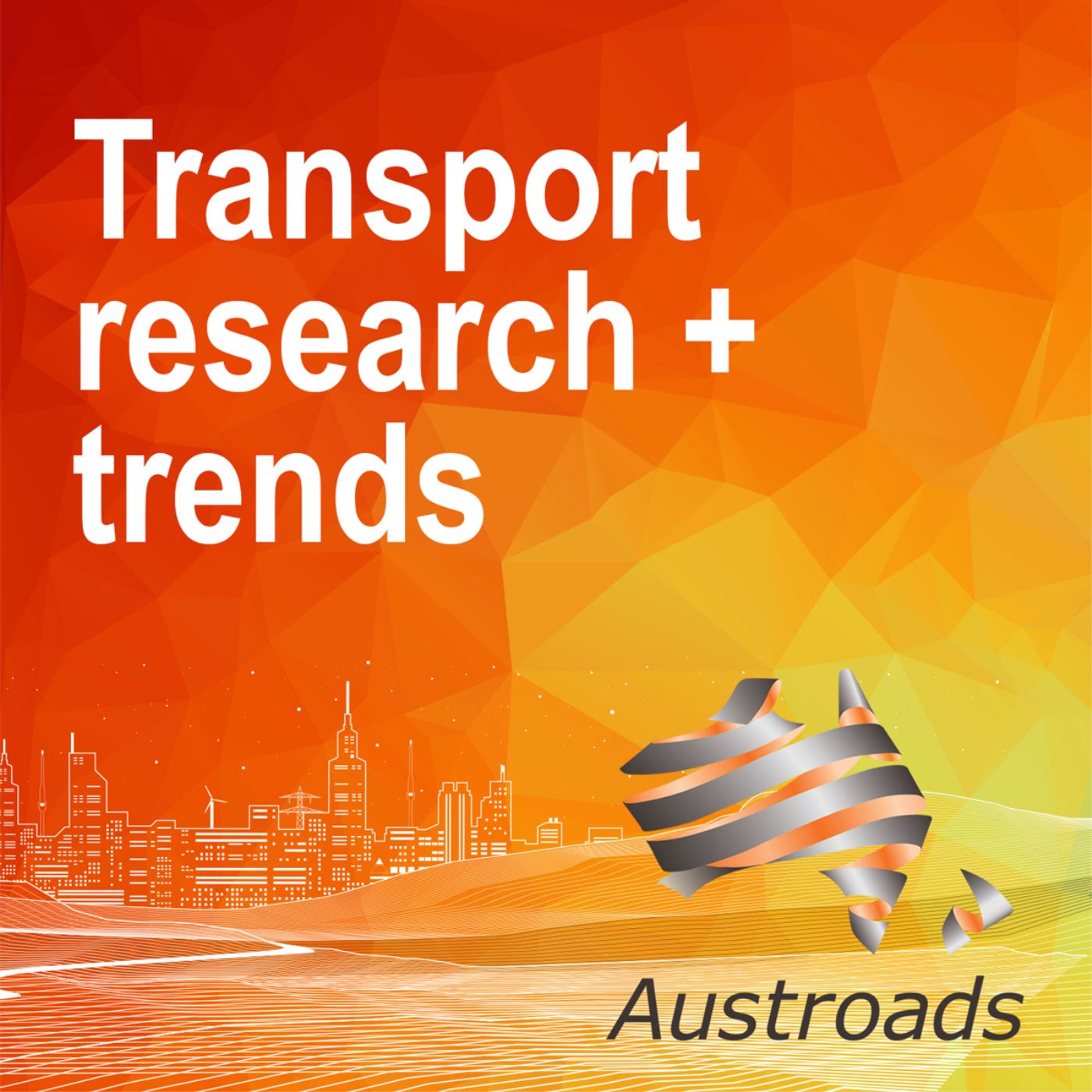Episodes
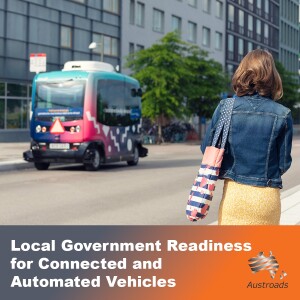
Monday Jun 24, 2024
Local Government Readiness for Connected and Automated Vehicles
Monday Jun 24, 2024
Monday Jun 24, 2024
This webinar is aimed at helping local governments (LGs) across Australia and New Zealand navigate the evolving landscape of connected and automated vehicles (CAVs). As managers of a large portion of the road network, LGs play a pivotal role in shaping the future of transport.
This webinar provides an overview of an Austroads project that developed guidance to enhance LGs’ preparedness for CAV integration. The webinar explores ten critical areas essential for LGs seeking to prepare effectively, spanning legal considerations and infrastructure readiness as well as financial impacts and stakeholder engagement. The session will also outline the proposed actions to support current and near-term vehicles with human operators and longer-term, fully automated vehicles.
The webinar also covers a proposed LG CAV Preparedness Framework and an Inflection Point Monitoring tool developed to assist LGs with decision making amidst the evolving landscape of CAV adoption.
The webinar starts by presenting the results of the initial consultation exercise, giving context to the understanding of what LGs considered to be most useful and relevant for their needs. It will then run through an overview of the developed tools and resources.
The webinar is presented by David Yee and Andrew Somers.
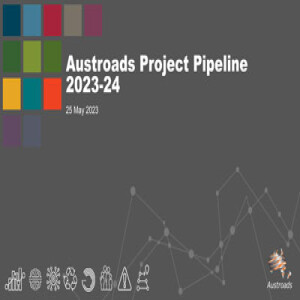
Thursday May 25, 2023
Austroads Project Pipeline 2023-24
Thursday May 25, 2023
Thursday May 25, 2023
This webinar is beneficial to consultants who may be interested in tendering for Austroads projects. The session covers new Austroads projects lined up for the 2023-24 financial year, Austroads process around research data collection and what is required to become a successful tenderer.
To find information about Austroads' current tenders, visit the tenders webpage. On that page, you can also subscribe to our Tenders newsletter to receive alerts when a new project is advertised.

Thursday Jul 21, 2022
Guidance to Support Cloud Connected Road Users
Thursday Jul 21, 2022
Thursday Jul 21, 2022
Road users are increasingly recognising the value of data for improved mobility and safety. Austroads Cloud Connected Road User (CCRU) project studied how agencies can support cloud-connected road users through data from portable and fixed in-vehicle devices to assist with trip planning, and warning and advice when travelling. The project examined various CCRU data provision methods and practices in the EU, USA, Australia, and New Zealand to provide agencies with guidance on how to manage, enhance, and deliver data to CCRUs.
This webinar, presented by Vibeke Matthews and David Yee, provides an overview of the various business models that may be used by agencies to support the CCRU ecosystem. It addresses the potential range of agency involvement across the key roles of CCRU data gatherer, data provider and data presenter that may be employed depending on the business model adopted for each data type.
The webinar also offers advice on how to manage the six key data function areas that are critical to supporting CCRUs. These include managing data foundations, governing data, planning and designing data, enabling and maintaining data, using data; and, if presenting data directly to road users, managing road user apps and websites. The outputs of this project will form the foundation of data support requirements for future CAVs.
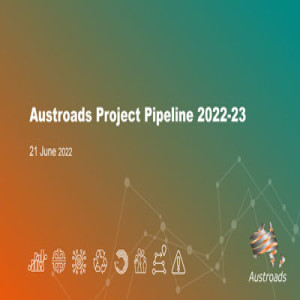
Tuesday Jun 21, 2022
Austroads Project Pipeline 2022-23
Tuesday Jun 21, 2022
Tuesday Jun 21, 2022
This webinar introduces Austroads new projects lined up for the 2022-23 financial year.
The session is most beneficial to consultants who may be interested in tendering for Austroads projects.
Upcoming projects focus on road network resilience, pavement design, movement and place, cycling and micromobility, future freight vehicles, road design, driver licensing, climate change risk assessment, automated and electric vehicle data exchange and provision.
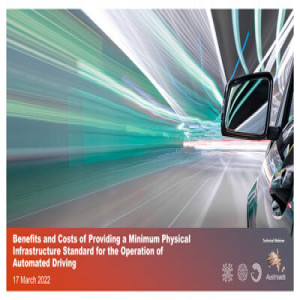
Thursday Mar 17, 2022
Thursday Mar 17, 2022
Physical road infrastructure such as pavement markings and signals may have an important role to play to support the uptake of automated vehicles (AVs). Austroads has recently completed a project to provide road agencies with clear advice on investing in physical infrastructure to support the operation of AVs.
This webinar, presented by Andrew Somers, Simon Xue and Elnaz Irannezhad, provides a detailed overview of the advice that addresses which infrastructure types should be prioritised for investment, as well as the timing and scale for that investment.
The advice has been developed against a backdrop of significant uncertainty around the future of AVs. These uncertainties include the year high-level AVs will become market-ready and the level of reliance of future AVs on physical infrastructures. To inform the development of the advice, the project first undertook an uptake forecast, an infrastructure assessment and economic analysis.
Having accounted for the various uncertainties of future AVs, the project has found the greatest return can be achieved by investments that will:
- support current lower capability AVs
- offer some advantages for human drivers
- be strategically relevant to future higher-level AVs.
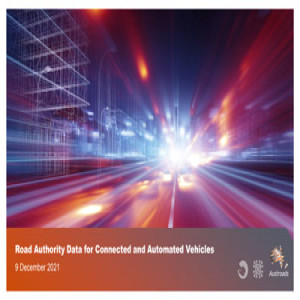
Thursday Dec 09, 2021
Road Authority Data for Connected and Automated Vehicles
Thursday Dec 09, 2021
Thursday Dec 09, 2021
The Austroads Road Authority Data for Connected and Automated Vehicles (RADCAV) project studied the provision of agency-owned data to connected and automated vehicles (CAVs) addressing six high-priority data sets: roadworks, incidents, variable speed limit signs and lane control signals, static speed limits, traffic signals, and heavy vehicle access restrictions.
This webinar, presented by Vibeke Matthews and David Yee, details a data provision framework that can be used by an agency to build capability in providing data to vehicles. The framework consists of the following components:
Capability model – a model that describes the spectrum of capabilities for the provision of agency data relative to vehicle and road agency capability over time. This ranges from Day 0.5 Capability (decision and actions made by vehicle controller), to Day 4 Capability (decisions and actions made by the vehicle).
Reference conceptual architecture – a series of outputs that describe the business architecture and information systems architecture necessary to provide agency data to vehicles at various levels of capability.
Implementation guidance – advice on how to use the Capability Model and Reference Conceptual Architecture as part of a process to improve an agency’s data provision capabilities.
The data provision framework is flexible and does not prescribe one end-state for agencies. Agencies have the freedom to choose a target state that suits their desired outcome, available funds, and appetite for change. It also caters for changes in vehicle capability over time, given that the introduction of higher-capability vehicles may be some years away.
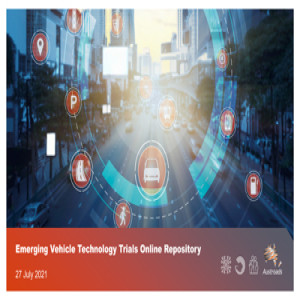
Tuesday Jul 27, 2021
Emerging Vehicle Technology Trials Online Repository
Tuesday Jul 27, 2021
Tuesday Jul 27, 2021
This webinar presents an Austroads online repository of emerging vehicle technology trials conducted by Austroads’ members and private industry around Australia and New Zealand.
The trials capture some of the ground-breaking work and lessons learned to help agencies better focus their research investment and inform policy and strategy decisions leveraging the benefits of emerging technologies and minimising some of the risks associated with them.
Webinar presenters are Andrew Somers who speaks about the repository, its purpose and content, James Soo from the Department of Transport Victoria and Nicholas Brook from the Queensland Department of Transport and Main Roads.
James Soo shares lessons learned from the Advanced Connected Vehicles Victoria (ACV2) trial, CAV Highway Pilot trial and the Omni-Aware Roadside Adaptation of Automated Vehicle LiDAR project.
Nicholas Brook talks about how Automated Vehicles interact with road infrastructure and the Ipswich Connected Vehicle Pilot.
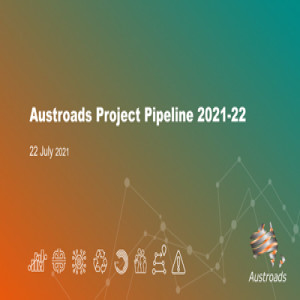
Thursday Jul 22, 2021
Austroads Project Pipeline 2021-22
Thursday Jul 22, 2021
Thursday Jul 22, 2021
This webinar provides an overview of Austroads’ projects 2021-22 and what is required to work with Austroads.
The session is beneficial to consultants who may be interested in tendering for Austroads projects.
The projects discussed focus on data collection and management, digital engineering, tunnel design and componentry, bridge assessment, pavement technology, road design, road safety audits, driver licensing, environment reporting, and vehicle and infrastructure connectivity.
The webinar is presented by Paul Davies, Austroads Acting General Manager Operations, and program managers:
- Ross Guppy, Program Manager Transport Infrastructure
- Michael Nieuwesteeg, Program Manager Road Safety and Design
- Richard Delplace, Program Manager Transport Network Operations
- Vibeke Matthews, Acting Program Manager Future Vehicles and Technology, and Environment and Sustainability Program.
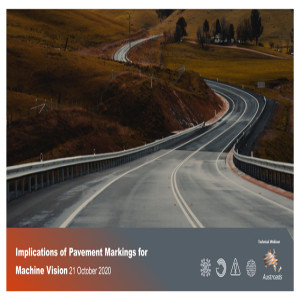
Wednesday Oct 21, 2020
Implications of Pavement Markings for Machine Vision
Wednesday Oct 21, 2020
Wednesday Oct 21, 2020
Introducing automated vehicles could dramatically impact the Australian and New Zealand travelling public’s driving experience and the industry’s approach to road safety and road design. This journey will undoubtedly take many years and considerable efforts in partnerships, testing, certification, design and legislation. A growing range of vehicles already available in the market offer automated-steering functions enabled by Advanced Driver-Assistance Systems (ADAS). Their performance depends on the vehicle’s technology and the environment where they are used. Greater consistency and quality in pavement markings will benefit not only automated vehicles but also all road users.
This webinar, presented on 21 October 2020 by Julien Marr, April Zhang, Scott Benjamin and John Wall, focuses on the outcomes of the Austroads research project, which was conducted to understand how longitudinal pavement markings affect automated steering functions and how existing design and maintenance practices could be improved.
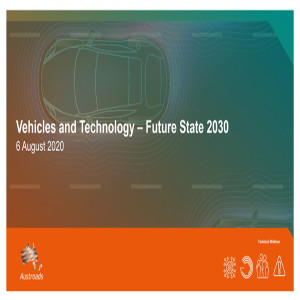
Thursday Aug 06, 2020
Vehicles and Technology: Future State 2030
Thursday Aug 06, 2020
Thursday Aug 06, 2020
This webinar, presented by Andrew Somers and John Wall on 6 August 2020, outlines the results of Austroads’ forecasts regarding penetration of automated, connected and electric vehicles technologies into new vehicles and vehicle fleets through to 2030. Each forecast focuses on a specific attribute, including:
- Active safety systems
- Capability for automated driving on motorways, in urban areas and in rural areas
- Connectivity via Cooperative ITS (C-ITS) or to the cloud via mobile data networks
- Battery Electric Vehicles
- Used for hire with a driver (as taxi, rideshare, etc).
These forecasts show the effects of a likely pattern of technology adoption and the proliferation of that technology through the fleet. As such, many of the forecasts show that only modest proportions of the fleet are equipped by 2030.
While outside of scope, considerations of the impacts of the technologies remain important and one role of this project was to provide forecasts on anticipated penetration to inform continued discussions on and planning for these impacts.

